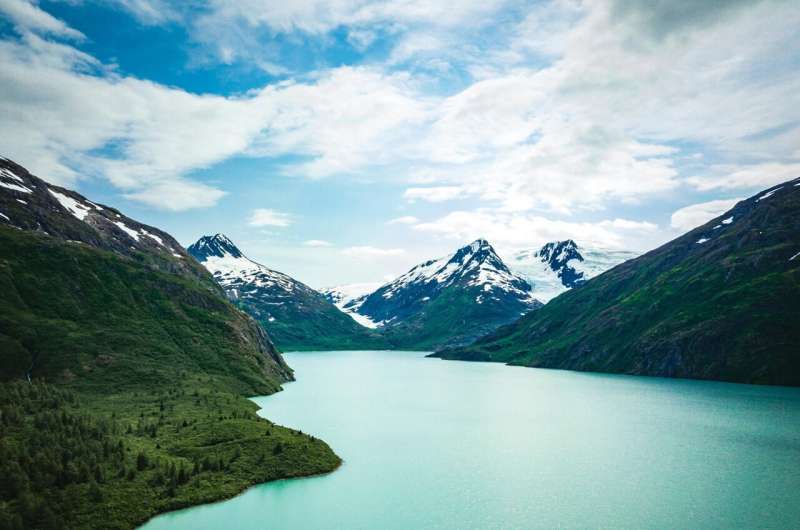Credit: Andrew Hanson from Pexels
A team of researchers from Alaska Pacific University, the University of Alaska Anchorage and, Northern Arizona University has found evidence that reductions in sea ice in the Arctic are helping white spruce trees move north and up mountainsides. In their study, published in the journal Science, the group compared tree-line spread in areas with reductions in sea ice and areas where little sea ice reduction has occurred.
Prior research has shown that when large bodies of water grow warmer during the summer, they tend to experience more evaporation as the winter months arrive. The result is more snow falling on nearby land. Prior research has also shown that some trees, such as white spruce, are better able to survive in extremely cold places when there is a lot of snow cover—it shields the seedlings from the cold and wind.
In this new study, the researchers found that in parts of the Arctic where sea ice has been reduced due to climate change, water temperatures have been rising, leading to more snow falling in surrounding areas. That has led to encroachment of tree lines as seedlings fare better over the winter.
The researchers studied satellite images, comparing tree-line encroachment in areas near sea ice reductions with areas where there has been little change in sea ice. They also gathered data from 19 field sites over four years, hiking 1,500 miles. They found a pattern in which tree lines were encroaching near places where the sea ice has been retreating but not in other areas.
The researchers also found increased snow land near places where the sea ice has been retreating serves as a blanket on the ground. Everything below the blanket stays warmer through the long winter than it does in places with a thinner blanket. That allows microbes to decompose organic matter in the topsoil all winter long. And that in turn releases nutrients that feed seedlings—further helping them survive the winter.
The team concludes that as tree lines encroach, they cover more land with greenery, which absorbs heat, pushing the Arctic to grow warmer even faster.
More information: Roman J. Dial et al, Arctic sea ice retreat fuels boreal forest advance, Science (2024). DOI: 10.1126/science.adh2339
Journal information: Science
© 2024 Science X Network























